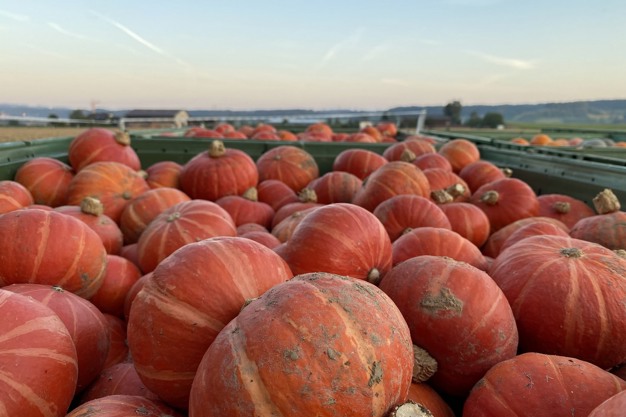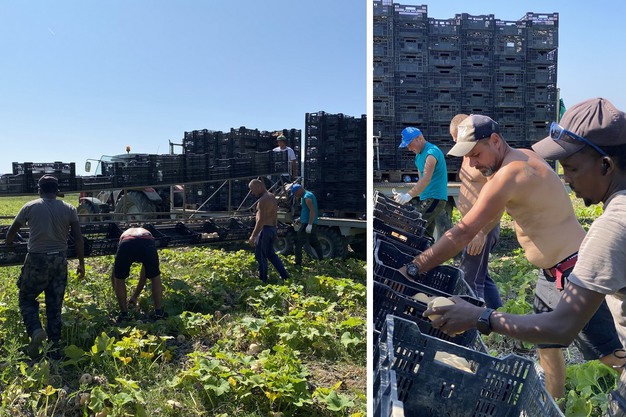The pumpkin harvest at Switzerland's largest producer, Jucker Farm AG, started around two weeks later than usual in week 33. "It was mostly wet and cold, which is why an earlier start of the season using fleece and film covers did not work this year. Nevertheless, there is no homogeneous picture in terms of yield. The yields of ornamental pumpkins are all satisfactory. In the case of the edible pumpkins, we have had to cope with almost total failures at certain locations and, as things stand today, will fall around 20 per cent short of initial expectations," Benjamin Keil, farm manager at the company's own farm, Spargelhof in Rafz, explains.

Farm manager Benjamin Keil
The farm specialises in growing conventional pumpkins, mainly Hokkaido and Butternut. Patissan, Spaghetti and Halloween pumpkin varieties are also grown. According to Keil, the season got off to a particularly good start in terms of marketing. "The demand for our early pumpkins is already surprisingly high. This shows us that pumpkins are no longer just an autumn vegetable. This shift is also being driven by new concepts in the catering industry, such as deep-fried or stuffed pumpkin. Our aim is also to drive this trend forward. Accordingly, we already produce pumpkin-based convenience products, such as halved and seeded pumpkins and meat substitutes with pumpkin and kick peas."
 The pumpkins find their way to consumers either via the retail or the catering trade. In addition, a portion is required for the farm's own needs, i.e. for the farm shops, catering or the Jucker Farm factory.
The pumpkins find their way to consumers either via the retail or the catering trade. In addition, a portion is required for the farm's own needs, i.e. for the farm shops, catering or the Jucker Farm factory.
Depending on the weather, the local pumpkin is marketed until February. From the end of August, there are usually the first promotions in the Swiss retail trade. At the same time, imported goods from Spain, Italy, Portugal, and South Africa can also be found at the PoS. Keil: "However, the classic peak is concentrated in the second half of October, just before Halloween. During this period, not only Halloween pumpkins but the entire pumpkin range is in high demand." Compared to the previous year, a moderate price increase had to be implemented, without disregarding the reduction in purchasing power and increased price sensitivity among consumers.

Butternut squash during storage.
Continuity characterises Swiss pumpkin cultivation
Jucker Farm AG processes and markets up to 1,500 tonnes per year, either from its own cultivation or from selected pumpkin farms throughout Switzerland. Due to the crop rotation, it is sometimes challenging to achieve the necessary cultivation capacity to meet demand, explains Keil. "Nevertheless, we have noticed that interest in pumpkin cultivation in Switzerland has been stable for several years."

Insights into the pumpkin harvest
Pictures: Jucker Farm AG
For more information:
Benjamin Keil.
Jucker Farm AG
Dorfstrasse 23
CH-8607 Seegräben
Phone: +41 44 934 34 84
info@juckerfarm.ch
www.juckerfarm.ch
